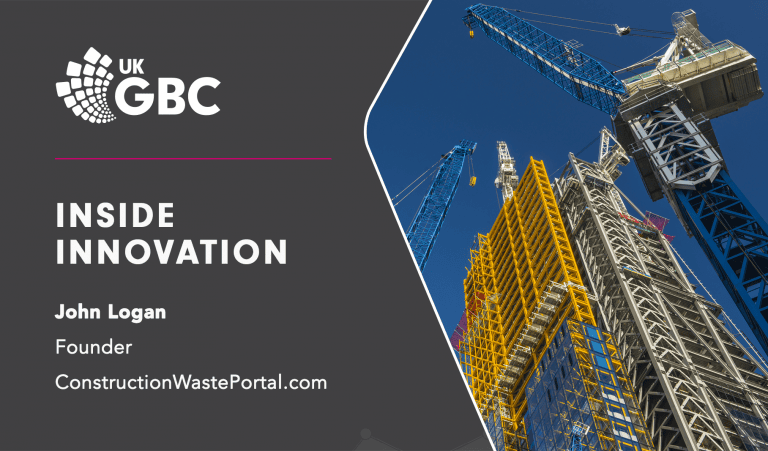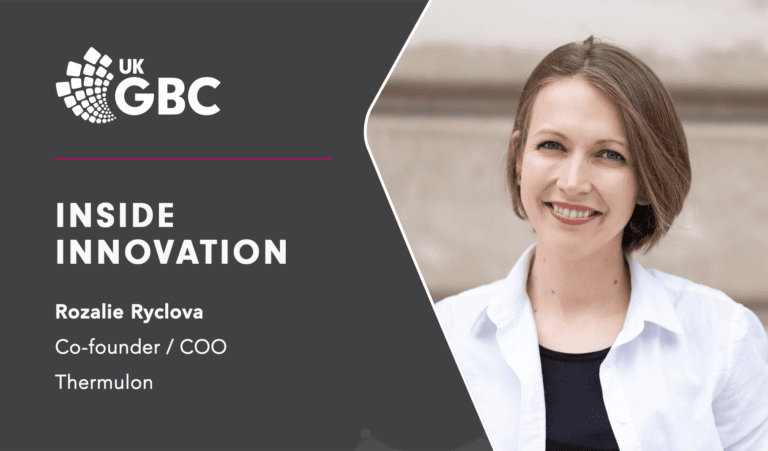Construction Waste Portal

What is your elevator pitch?
I’ve been in construction for thirteen years now, and I’ve always been intrigued by the fact that construction waste seemed to be somebody else’s problem. Nobody ever takes ownership of it, and there’s always a blame-game when something goes wrong which results in a profit impact.
For the last decade the industry has consistently produced over sixty million tonnes of waste per year. Our long-term goal is to therefore drastically change how the construction industry views waste, and to drive a betterment in performance.
In September 2018 I came up with the idea of applying data science to historic industry data to provide waste forecasts for projects in different areas across the country. I then began expanding that, linking it to the waste and resource management market in specific areas, giving local companies a chance to showcase their service capabilities as well as their commercial rates.
The unique selling point is simply that there is nothing else like it.
How did you get where you are today?
When I had the idea for the portal it literally was a ‘lightbulb moment.’ I started canvassing friends and colleagues within the industry. In response, people started voluntarily sending me data from construction projects in terms of how much waste was produced and different types. The website is built on a data set of just under one thousand completed projects across the UK, so statistically it’s very strong.
I received really strong backing from funding bodies in order to develop the idea, build a prototype and launch it after extensive testing. Without that belief and support the idea would never have had a platform to develop, and I’m grateful for the belief and support those individuals and organisations provided. I won’t name them, they know who they are.
I also went through the UKGBC Leadership Accelerator Programme. That was a really positive experience, and it really made you think about yourself as an individual as well as a professional, and I believe that process gave me the drive to challenge convention and see the idea become a reality.
What does innovation mean to you?
Everybody thinks you need to reinvent the wheel and produce something entirely new to be innovative. However, I think innovation can just be freshness, looking at a problem with a different set of eyes.
Cognitive diversity is important and taking a different angle or approach to a problem can provide you with the innovation that’s needed to solve it. That’s largely where my interpretation of innovation lies; it’s not about turning an iPhone 10 into an iPhone 11 – that’s just about function, not necessarily innovation. A lot of people think that innovation has to be something tangible; something that you can touch and feel and that has a colour, without actually being a solution to a problem. Solving problems is the most important part.
How hungry is the built environment for innovation?
We live in an age where we’re still very much a disposable society, so I think that as we go forward, the drive towards Net Zero will inevitably rely on innovative new products, replacement products and new technology. I think that some of the innovation that’s needed is in where we place focus. We’re busy future-proofing buildings going forward for the next forty years and we don’t really seem to be focusing on any innovation for buildings that were built forty years ago. So, I think there’s a hunger to continue the journey forward and leave the historic issues in the slip-stream.
We need to start being a bit more retrospective about how we view the problems that we’ve created and more innovation there will help us move forward. Whether you like it or not, the ultimate symptom of net zero is offsetting, which I think will always have a degree of green-washing about it unless things change, so there needs to be some innovative thought about offset projects in this country, particularly where the legacy impact of social housing stock emissions and alleviation of fuel poverty is concerned.
What needs to change to help encourage more innovation?
I think people need to be given freedom of thought and a platform to express themselves. Some organisations, rightly or wrongly, are still very hierarchical. People coming into organisations in new roles are often young, dynamic, enthusiastic and they have a lot of fresh ideas or different slants on problems and issues. After a while they become institutionalised into the way the organisation ‘has always done things’ and that enthusiasm is trained out of them.
I’m a strong believer that disruptive thinking is good for progress, and I think that as we progress through time, we need to move away from the decision-making hierarchy that can often stifle ideas. We need organisations that encourage younger people and people from different backgrounds. Generally, we need intellectual diversity which encourages people to put forward some fresh ideas.
What are the biggest challenges you have faced as a start-up?
Covid-19, undoubtedly. However rather strangely, Covid has actually been good for the website in that it’s now better and has more functionality than it did before lockdown. That time was used as a positive, even though we got underway in far from normal trading conditions. The additional capacity and functionality of the website has enabled us to target a wider audience base, so we’re now also looking at consultancies, and recently had our first teams of architects join. The fact that the business is doing well is testament to how the website has been embraced by both industries.
Beyond Covid, I think one of the biggest challenges is convincing the construction industry that we’re trying to do something that’s good for the industry. There’s still a lot of engrained negativity in the industry when new ideas come along unless you can tie a pound note saving to the bottom line.
Additionally, finding the right people to talk to is a challenge as construction is a very large industry. There is a lot of peer pressure within the industry as well, so we’re hoping that as we get more contractors on board it will become an established tool within the industry and even more companies will join to accelerate the change the industry needs.
What’s your advice for new innovators and start-ups in the built environment?
Don’t let anybody tell you that you can’t do it or that it won’t work. There should be no barriers to pursuing an idea if it has validity and you believe in it. It’s largely about conversations and networks; I wouldn’t have been able to take this idea beyond being a lightbulb if it hadn’t been for friends and connections in the industry.
Surround yourself with people who will understand what your idea is trying to accomplish, canvass their opinions on your ideas. Also be prepared for knocks on the way as setbacks can be positives if managed properly and learned from. Be patient, work hard and keep believing in yourself.
What’s next for your company?
We’re always looking to be better. If through conversations come some new ideas on how we can improve the website then we will develop them, but I think at the moment it’s just about gaining that momentum to become fully established within the industry.
Related
Inside Innovation: R8 Technologies

Inside Innovation: Etopia

Inside Innovation: Thermulon

Inside Innovation: Biohm

